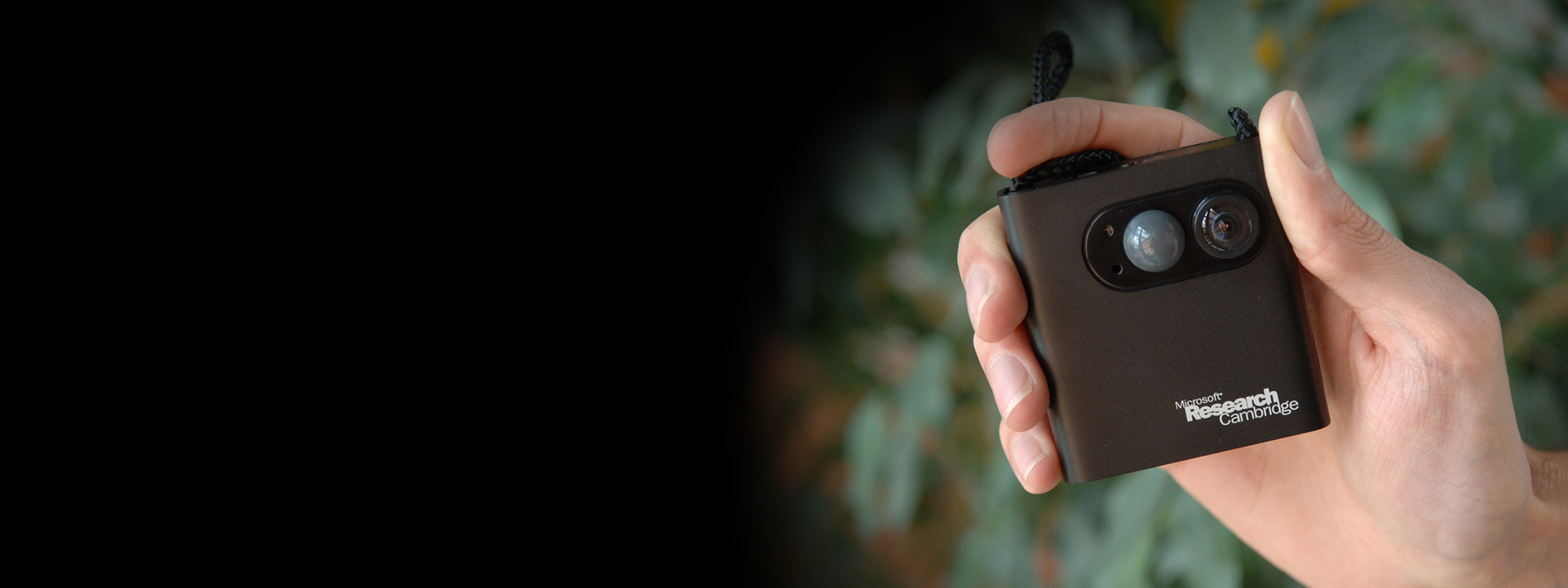Other Applications for SenseCam
In addition to the use of SenseCam as an aid for people with memory loss, the device has a number of other potential applications. In 2005, Microsoft provided some of the first SenseCams to a number of academic collaborators interested in the general area of ‘digital memories’, i.e. life-recording or life-logging (opens in new tab). These projects applied SenseCam in a variety of ways. For example CLARITY, the Centre for Sensor Web Technologies (opens in new tab) at Dublin City University, Ireland, is working on systems that will automatically generate ‘landmark images’ through analysis of the large number of images and other logged data recorded by SenseCam. In this way a personalized memory experience of a visit to a museum, national monument, etc. can be automatically generated, based on data collected by SenseCams worn during the visit. The CLARITY Centre has also done a huge range of additional research related to SenseCam (opens in new tab).
We are also working with Dr Charlie Foster and his colleagues from the Health Promotion Research Group (opens in new tab) at Oxford University, UK. This work, funded in part by the British Heart Foundation, looks at the relationship between the environment and physical activity – for example how effective the provision of cycle lanes is in encouraging people to leave their cars at home. SenseCam can be useful as a means to measure various aspects of the of the environment and the amount of exercise people take. The group is also using SenseCam as a tool to record food choices and eating habits.
We worked with the Universities of Nottingham and Bath, the BBC, BT and two small companies, Blast Theory and ScienceScope as part of a project called Participate. The purpose of Participate is to design, develop and test the utility of novel, pervasive, lightweight and wearable technologies that support mass participation in science, education, art and community life. SenseCam has been used by a number of school children as part of this project. In a separate piece of work, SenseCam has been used in the classroom to enable teachers to create a log of their day, supporting various aspects of reflective practice and thereby enabling users of the device to analyse their day afterwards. SenseCam has also been used in an office environment to support studies of how office workers spend their day, and in particular how they manage to work simultaneously on different tasks.
Collaborations with a number of other researchers around the world to further explore yet more potential usages for SenseCam include:
- As a tool to assess accessibility issues encountered by wheelchair users.
- To coordinate disaster response by recording visual information encountered by those responding to disasters, people preoccupied with providing hands-on help.
- As an automatic diary that doesn’t require expensive, intrusive recording equipment or restrict a user’s activities.
- A non-intrusive market research tool.
- To monitor physiological data to help patients understand the sequence of events that precedes a period of intense anxiety or anger.
- To monitor lighting conditions in schools and to learn how they affect students.
- Capturing personal experiences for sharing with others.”

